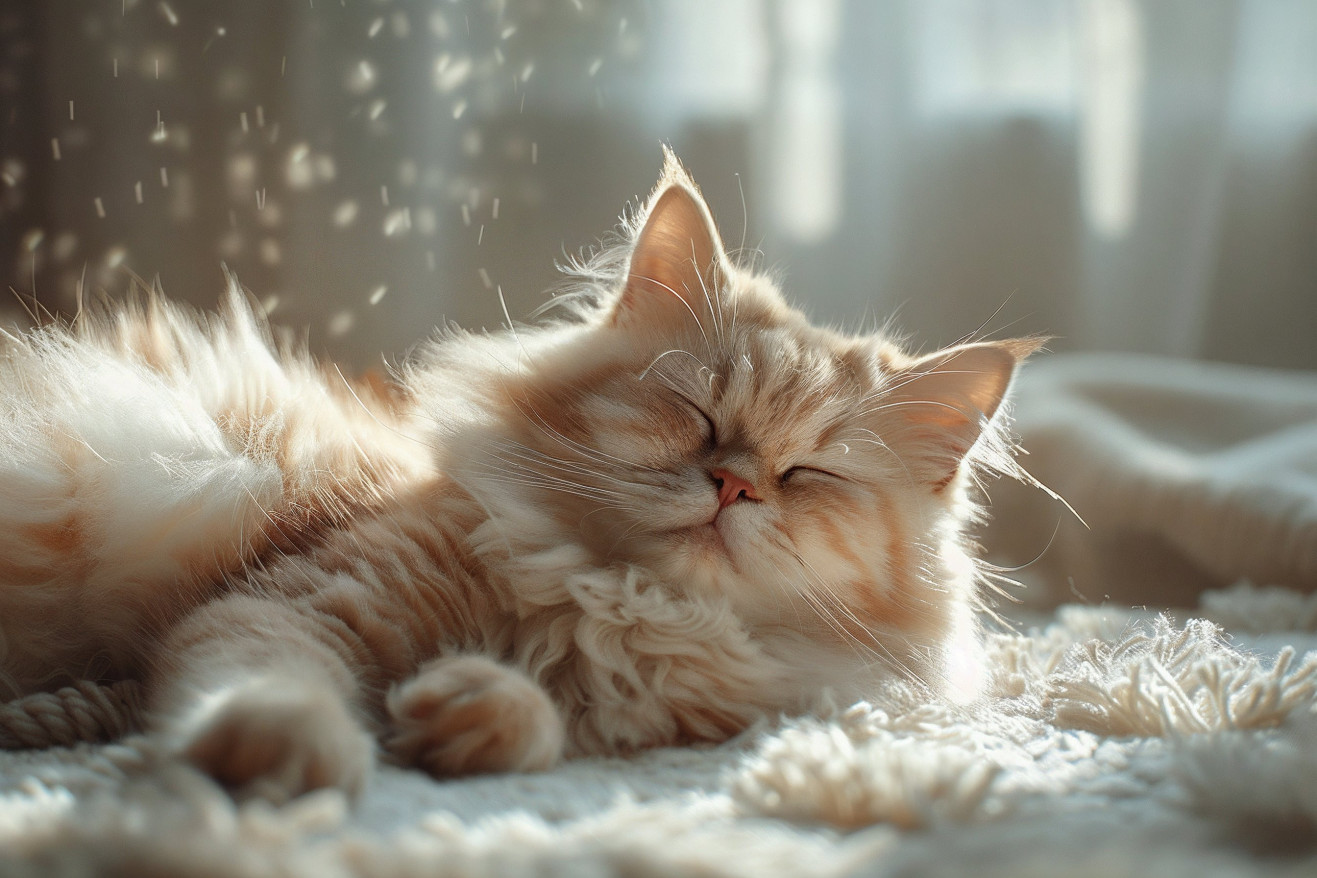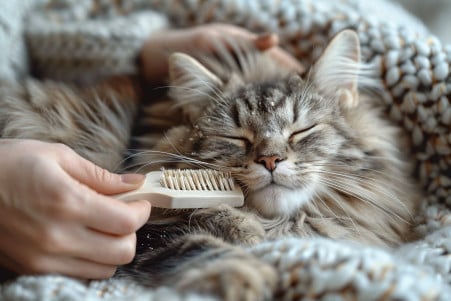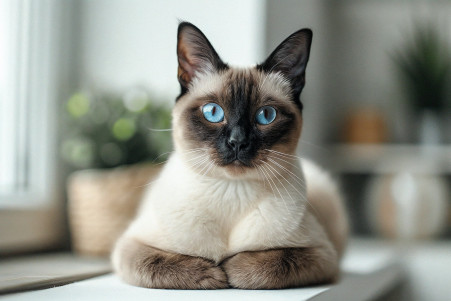Why Is My Cat Shedding So Much? Causes and Solutions
2 April 2024 • Updated 1 April 2024

There are many reasons why cats may experience excessive shedding, including seasonal changes, poor diet, stress, allergies, and medical conditions. While some shedding is normal, especially during the spring and fall when cats shed their winter and summer coats, year-round excessive shedding may be a sign of an underlying medical issue that needs to be addressed by a vet. Some of the most common causes of excessive shedding in cats include skin allergies, hormonal imbalances, parasites, and systemic diseases.
In this evidence-based article, we'll explore the latest findings from veterinarians, animal behaviorists, and other researchers to help you better understand the most common reasons for excessive shedding in cats. We'll also help you figure out what may be causing your cat's increased hair loss and provide actionable solutions to help you address the problem. From dietary and grooming changes to medical interventions, we'll help you better understand what you can do to help your cat maintain a healthy coat and reduce excessive shedding.
Why is my cat shedding so much?
Diet and Cat Shedding
A nutritious, high-quality diet is essential to promote a healthy coat and reduce shedding in cats. According to Bond Vet, cats need a diet that's high in animal-based proteins and fats to support skin and coat health. Important nutrients that can help reduce shedding in cats include omega fatty acids, high-quality animal proteins, and the right fat levels.
As Untamed points out, since cat hair is made up of keratin protein, it's best to look for a diet that contains at least 40% animal-based protein to support strong hair follicles and reduce shedding. PetMD recommends looking for a diet that contains 25-35% fat on a dry matter basis, and that includes omega-3 and omega-6 fatty acids, such as fish oils.
If a cat's diet is lacking in essential nutrients or if a cat is allergic to an ingredient in their food, it can lead to dry skin, brittle hair, and shedding. According to Cats.com, common allergens in cat food, such as wheat, soy, and low-quality protein sources, can cause a cat to shed more than normal. However, switching to a cat food that's been formulated to contain the right nutrients, as well as the right ingredients, such as the ones listed in We Love Cats and Kittens, can help a cat's coat improve in as little as one to three months. It's also important to make sure your cat is getting enough water, which is essential for skin and coat health.
Grooming Hacks for Managing Cat Shedding
Regular brushing is one of the best ways to control and minimize cat shedding. BeChewy explains that how often you brush your cat depends on their hair length, but long-haired cats will need to be groomed more often. In addition, the right grooming tools, like deshedding brushes or combs, can help you get rid of more loose fur, says Uproot Clean.
Bathing your cat with a moisturizing shampoo every once in a while can also help remove excess fur during shedding periods, according to Pet Assure. Meanwhile, giving your cat treats, praise, and short grooming sessions can help make the experience more pleasant for both you and your pet, says All About Cats, and help you use grooming as a way to bond with your cat, according to Uproot Clean.
How to Deal With Seasonal Shedding in Cats
Cats have two main shedding seasons each year, in the spring and fall, which are caused by changes in the amount of light and temperature. According to Edgard & Cooper, outdoor cats are more likely to have more noticeable shedding seasons, while indoor cats are more likely to shed at a steady rate throughout the year because the temperature in their environment is regulated, a point that Vetster also makes.
Long-haired and larger cat breeds are more likely to have more noticeable shedding seasons, according to Catster. To help deal with the excess fur that comes with shedding seasons, Pet Assure suggests increasing the frequency of brushing, vacuuming, and using lint rollers. In addition, keeping your cat calm, well-hydrated, and well-fed can help reduce seasonal shedding, as noted by The Comforted Kitty and Pet Wellbeing.
When to Talk to Your Vet About Your Cat’s Shedding
While some shedding is normal, excessive hair loss or bald patches can be a sign of an underlying issue that needs to be addressed by a vet. According to Zoetis Petcare, other signs to look for that could indicate a problem include skin redness or irritation, increased or decreased grooming, and more frequent hairballs.
Potential medical reasons for excessive shedding in cats include allergies, parasites, hormonal imbalances, stress, and systemic diseases. As mentioned by Pumpkin®, conditions like hyperthyroidism and kidney disease can cause a cat to have an unkempt, shedding coat. A vet can run tests and do a physical exam to determine the cause of the excessive shedding and recommend the appropriate treatment.
It’s important to treat any medical issues that may be causing excessive shedding in order to help your cat manage their shedding and maintain a healthy coat. According to Bond Vet, if you notice excessive shedding or any other symptoms, it’s best to talk to your vet to rule out any medical issues. With proper care and treatment, cat owners can help their pets maintain a healthy, well-groomed coat and reduce excessive shedding.
Conclusion: How to Keep Your Cat’s Coat Healthy and Minimize Shedding
While shedding is a normal part of a cat’s life, there are ways to help manage excessive shedding. A healthy, high-quality diet, regular grooming, and making sure any health issues are addressed are the most important things you can do to keep your cat’s coat healthy. When your cat is shedding more than usual, you can also help by increasing the frequency of grooming, vacuuming, and making sure that you control other factors that can make the problem worse.
If your cat’s excessive shedding doesn’t improve or if it’s accompanied by other symptoms, make sure to get help from a veterinarian. They can help you figure out what’s going on and how to treat it. With the right care and attention, cat owners can help their pets have healthy, well-groomed coats and keep excessive shedding to a minimum.


